Creating a Trial Edition Instance in Oracle Cloud Infrastructure
This section shows you how to create an instance in Oracle Cloud Infrastructure Compute for the Trial Edition of JD Edwards EnterpriseOne. This single instance contains the supported version of the Linux operating system as well as all the interconnected machines that are necessary to run the Trial Edition version of JD Edwards EnterpriseOne.
Oracle Cloud Infrastructure Compute lets you provision and manage compute hosts, known as instances.
For additional information refer to Creating an Instance in the OCI documentation.
Prerequisites
- The user interface for the Oracle Cloud Infrastructure Console is constantly evolving. For the most up-to-date descriptions and navigation, refer to Using the Console.
- You should have a fundamental understanding of the Oracle Cloud Infrastructure. It is highly recommended that you review the extensive collateral information, including training, at this site:
- You must have a subscription and an Administrator account to Oracle Cloud Infrastructure as described at this site:
- To access the Oracle Cloud Infrastructure Console, you must use a supported browser. See Supported Browsers under Browser Issues.
Creating a Trial Edition Instance in Oracle Cloud Infrastructure
Use this procedure to create an instance for JD Edwards EnterpriseOne Trial Edition on Oracle Cloud Infrastructure.
- On the Oracle Cloud Infrastructure Console Home page, click the navigation menu in the upper-left corner.
-
From the navigation menu, select Marketplace and then All Applications in the fly-out menu.

-
In the Marketplace page, locate the listing for JD Edwards EnterpriseOne Trial Edition.
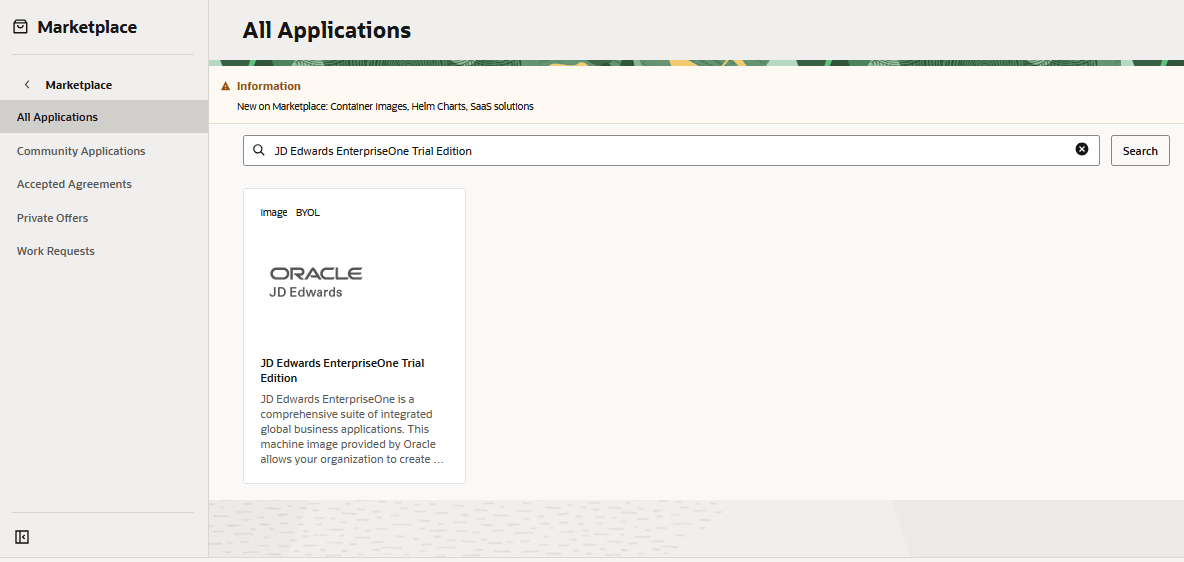
-
Click on the Marketplace listing for JD Edwards EnterpriseOne Trial Edition.
Note: Only the current version of Trial Edition is available on Marketplace. - On the Marketplace listing for JD Edwards EnterpriseOne JD Edwards EnterpriseOne Trial Edition, in the COMPARTMENT field, use the drop down list to select the compartment that you previously created in the OBE of this Learning Path entitled Creating a Compartment.
- Also, on the Launch Instance page, you must review the Oracle standard Terms and Restrictions and click the check box indicating you accept the terms.
- Click the Launch Instance button to continue.

- On the Create Compute Instance page, complete these fields:
-
NameNote: The system automatically populates this field. It is recommended that you change this name to a value that you might more easily recognize. You can change the name later. The name does not need to be unique because an Oracle Cloud Identifier (OCID) uniquely identifies the instance.The name you enter here is the display name of the instance. This will be the host name of the JD Edwards EnterpriseOne Trial Edition server. For example, the Trial Edition server might be called jdetrial.Important: Special Naming Restrictions. Ensure that the host name of the JD Edwards EnterpriseOne Trial Edition instance contains only alphanumeric values. You cannot use metacharacters such as $, !, _, |, @, and so on, in the host name.
Machine names are limited to a maximum of 15 lower-case alphanumeric characters. This is the character count which is supported by the JD Edwards EnterpriseOne database table and application design.
Do not use a fully qualified domain name for host names. You should only specify the first node of the domain name.
If the existing hostname does not conform to these requirements, the runtime of JD Edwards EnterpriseOne will fail. If a host name does not conform to these requirements, you should permanently change the host name for your system.
Create in Compartment
Use the pull-down menu to select an existing Compartment into which you created in the section Creating a Compartment.
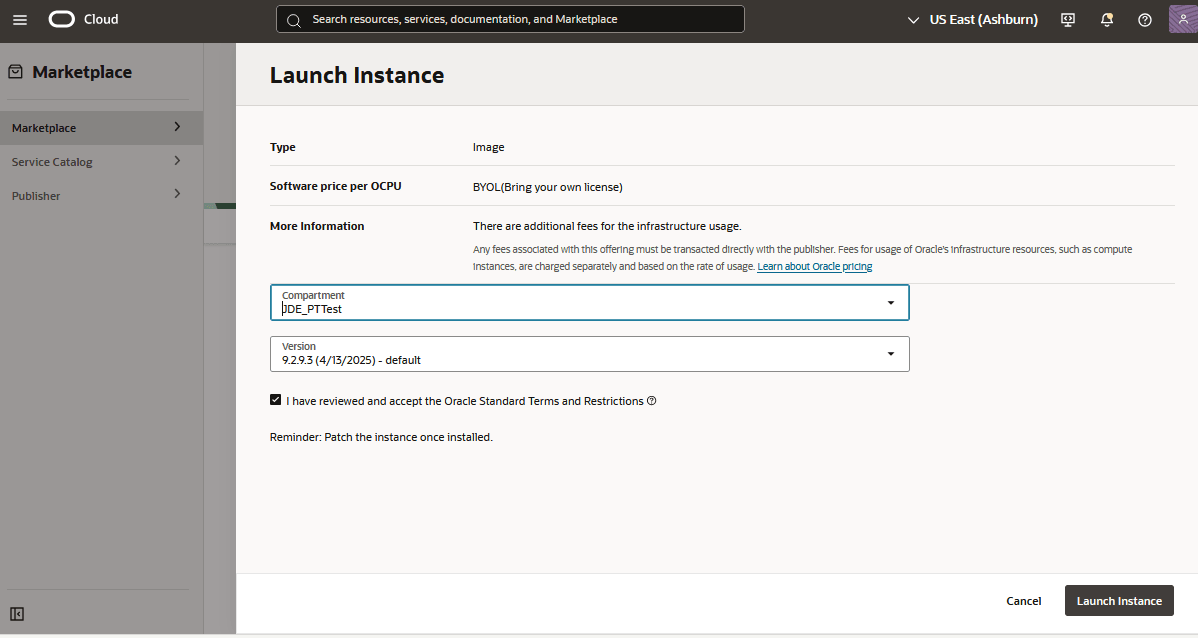

-
Name
-
Placement
Availability Domain
Click on an availability domain (AD) to select it. You can only specify a single AD.
Image and shape
In the Image subsection, because you already selected the image from Marketplace, the Trial Edition image is automatically shown here. You should accept this value. In the Shape subsection, a default selection is shown. You can accept the default value (assuming it meets the requirements) or click the Change Shape button. The supported shape properties for JD Edwards EnterpriseOne Trial Edition are:Browse All Shapes
In the Shape subsection, a default selection is shown. You can accept the default value (assuming it meets the requirements) or click the Change Shape button. The supported shape properties for JD Edwards EnterpriseOne Trial Edition are:Browse All Shapes- Between 2 and 8 OCPUs
- Between 30 and 128 GB of memory

A shape is a template that determines the number of CPUs, amount of memory, and other resources allocated to a newly created instance.
You can customize the number of OCPUs and the amount of memory allocated to a flexible shape. The other resources scale proportionately. As mentioned above, you should only pick a shape with the supported shape properties for JD Edwards EnterpriseOne Trial Edition.Ensure flex shape matches requirements of OCPU and Memory (Recommended 4 OCPU and 60 GB memory).
Instance Type
Ensure that the instance type for Virtual Machine is selected.
Shape Series
Important: Because you selected the Trial Edition image, the Shape Series is automatically restricted to those shapes with properties that are specifically supported by Trial Edition.Warning: If you use any shape other than recommended (which is tested), you may experience unpredictable results. To remedy, you will have to destroy the instance and redeploy using the recommended shape.Important: For AMD flex shapes, at a minimum, you should accept the default memory value associated with the selected OCPU.After you have selected a shape with the supported OCPUs and memory, click the Select Shape button.Networking
-
Primary network
Select this radio button: Select existing virtual cloud network
-
New virtual cloud network name
Use the pulldown to select the VCN that you created in the previous section of this Learning Path entitled: Creating a Virtual Cloud Network
-
Virtual cloud network in <compartment>
This value is automatically populated depending on the compartment you selected.
-
Subnet in <compartment>
This field will be automatically populated based on the compartment you selected.
Important: Expand the Advanced Options to change the default DNS settings. Select Assign a private DNS record. Leave the Hostname field blank and the other default settings unchanged.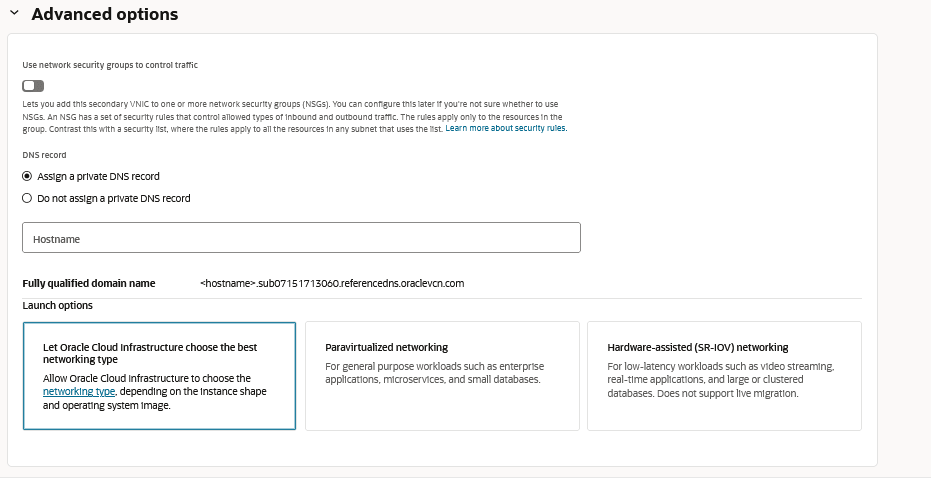 Note: If the instance is brought up without a private DNS record, the Trial Edition will not configure properly and it will have to be deleted and recreated.
Note: If the instance is brought up without a private DNS record, the Trial Edition will not configure properly and it will have to be deleted and recreated.Add SSH Keys
You must add the SSH keys that you previously created for use with JD Edwards EnterpriseOne Trial Edition. If you followed the recommendation in this document, you created these keys in the OBE of this Learning Path entitled: Generating Secure Shell (SSH) Key Pairs on Your Local System.You can either click the Upload public keys files (.pub) option to select a file with your public (.pub) key from your computer, or choose the Paste SSH keys option to paste the key.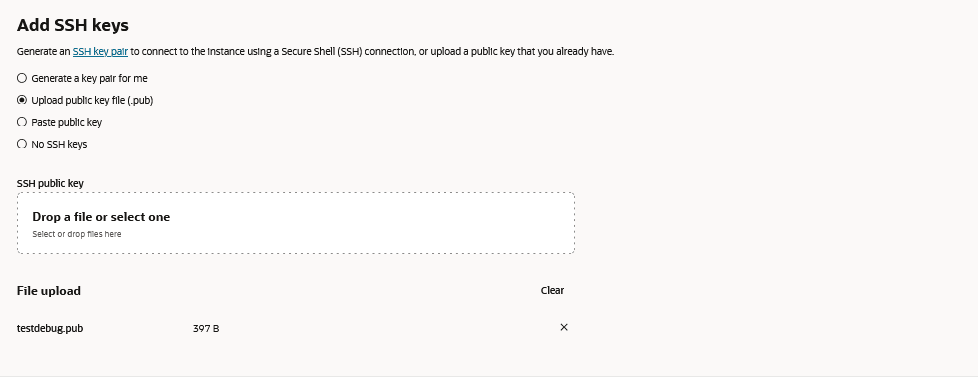
Boot Volume
You do not need to make any selections in this section. At a minimum, you must accept the default volume size which is set by the image for Trial Edition.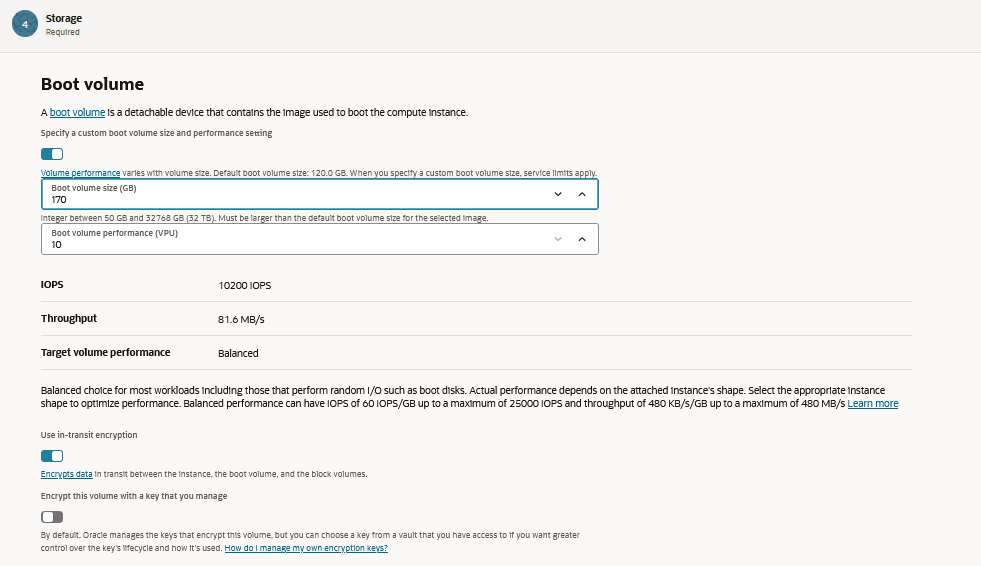
-
In the Review section, check your entires and click the Create button to create the Oracle Cloud Infrastructure instance for JD Edwards EnterpriseOne Trial Edition.Important: After the instance is created, the system assigns a Public IP address. Make a note of this address because you will need it to connect to the instance using the SSH keys in order to complete the first-time configuration of the Trial Edition for JD Edwards EnterpriseOne as described in the following section.
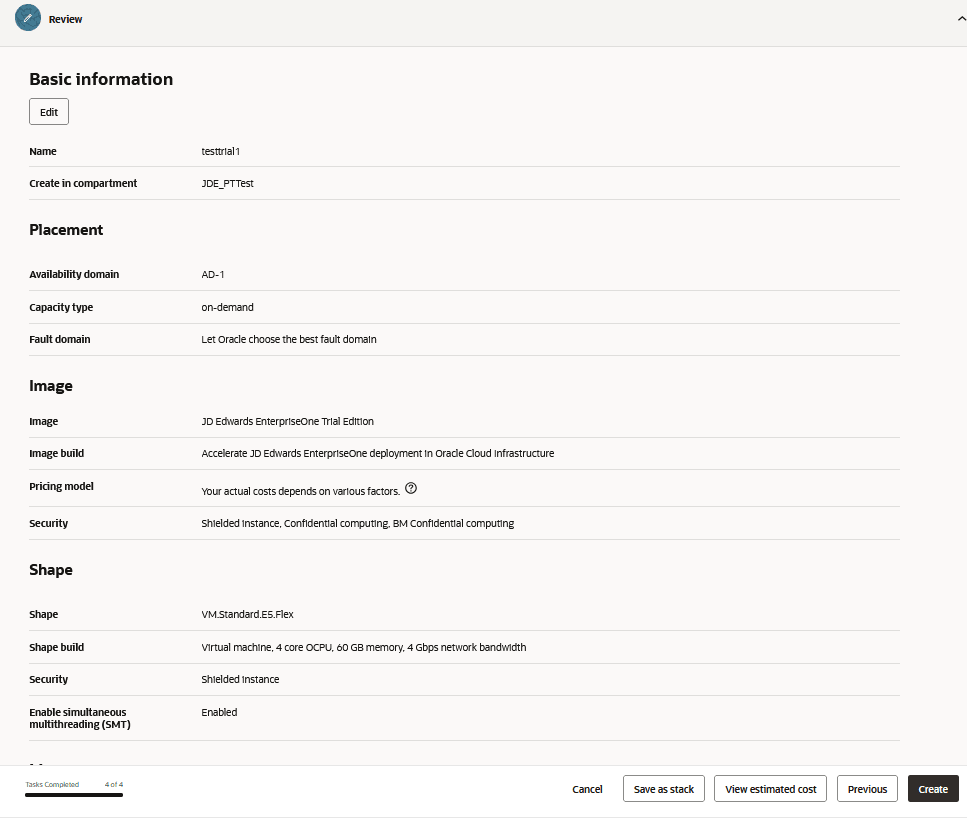
- On the Create Compute Instance page, complete these fields: